Baroque churches are a type of architectural style that emerged in the late sixteenth century and was popular throughout Europe and America until the mid-eighteenth century. These churches are characterized by ornate decoration, grandeur and a dramatic use of light and shadow.
Route through the churches of the Antequera Baroque
There are cities in Malaga that lend themselves to enjoyment, pleasure and adventure. Antequera is one of them. Its monumental heritage, synthesis of the best Baroque, the perpetual aesthetics of the white villages, the Andalusian urbanism and the syncretism with Western culture make the city a mecca for the most demanding travelers.
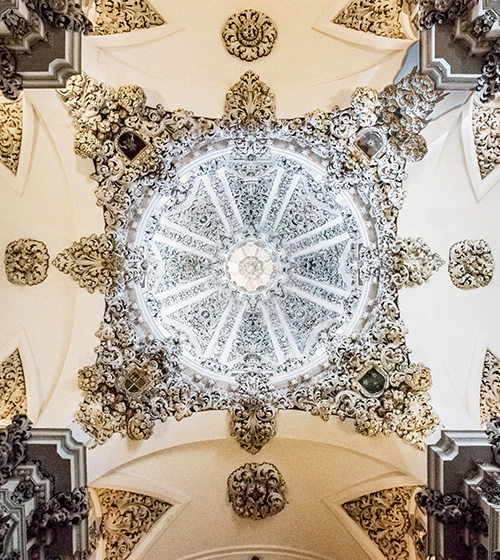
San Juan de Dios Church
When the order of the Hospitaller Fathers of San Juan de Dios arrived in Antequera, in the second half of the seventeenth century, the works of the church that bears his name began and that would last until the end of the eighteenth century.
Calle Infante Don Fernando, 67, Antequera, Málaga
San Juan de Dios Church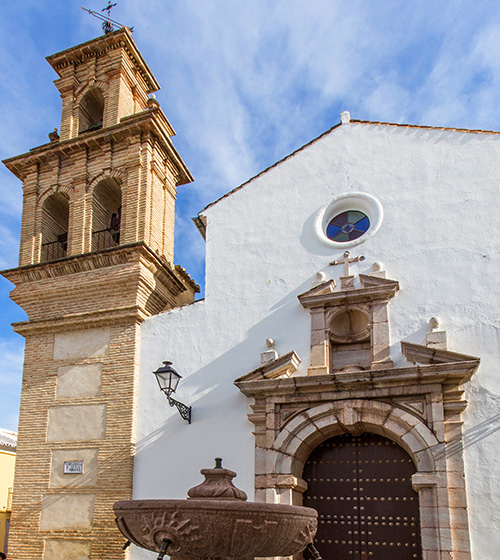
San Miguel Church
The current work is due to the master mason Nicolás Mejías, carrying it out between 1784 and 1785. In 1954, an important number of works were carried out, so of the work of Mejías only the main chapel, the dressing room of this and the belfry are preserved.
San Miguel Street, 41, Antequera, Malaga
San Miguel Church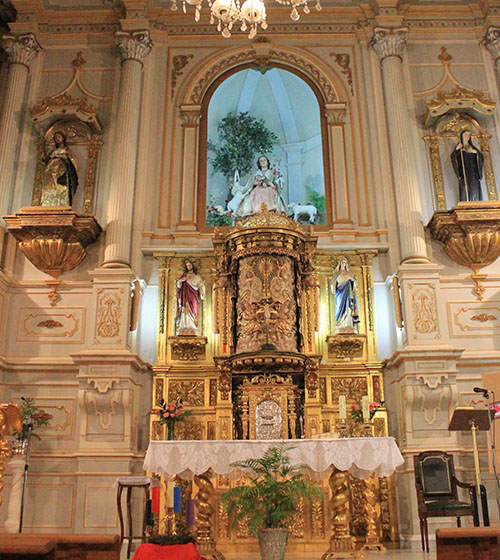
Church of Our Lady of Loreto
The church dedicated to Our Lady of Loreto began to be built in 1693, by order of the Jesuits, to whom also belonged the school that stands next to it. The building as a whole is popularly known by the name of “Las Recoletas”, due to the Augustinian Recollects, who were housed in it after its abandonment by the Jesuits.
Maderuelos Street, 1, Antequera, Malaga
Church of Our Lady of Loreto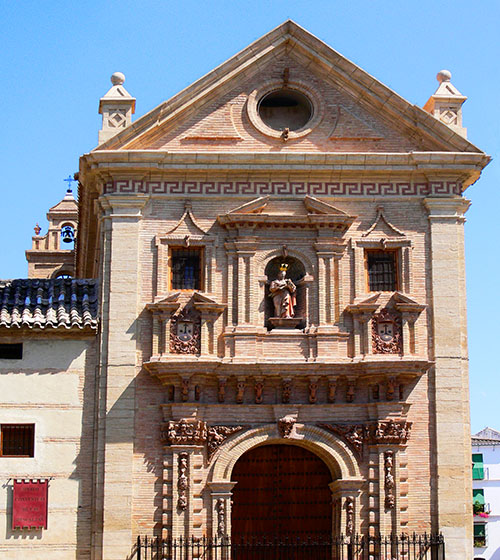
Convent of San José
The Discalced Carmelites of Santa Teresa founded a house and convent in Antequera in 1632, although the current church was built between 1707 and 1734. Of the whole exterior, the little door of the foundation’s rule of time and, of course, the wonderful baroque façade of the church, attributed to Tomás de Melgarejo, stand out. This façade responds to the Carmelite compositional scheme, although it also results from a remarkable paganism in its iconographic programs not in accordance with the spirit and rule of the Order.
Plaza de las Descalzas, Antequera, Málaga
Convent of San José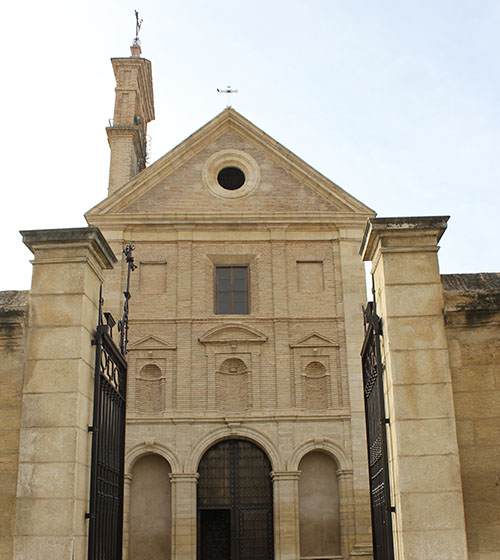
Convent of Bethlehem
This convent belonged to the Discalced Carmelites until the nineteenth century, when it became occupied by the Poor Clare Sisters, who still reside in it as cloistered nuns and are dedicated to some crafts, including the elaboration of mantecados and sweets in general. This temple that we can admire today was already being built in 1628 by the Portuguese Gonzalo Yáñez, and has a sober façade, carved in stone and brick combined.
Calle Belén, 6, Antequera, Málaga
Convent of Bethlehem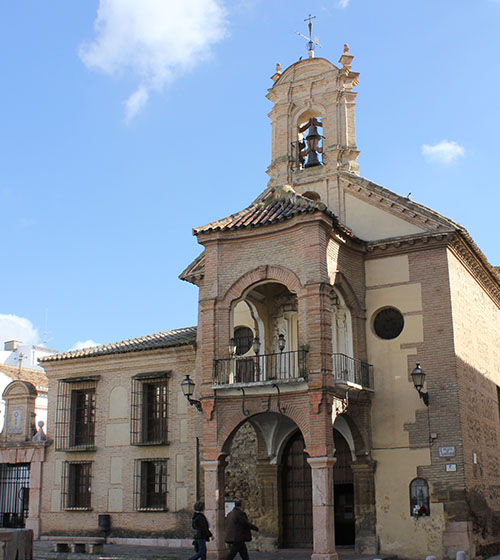
Church of Santiago Apóstol
The church of Santiago was erected as a simple hermitage in 1519, and since 1822 it has been a parish church. The temple that has come to us must be from the mid-eighteenth century, and may be the work of the master builder Cristóbal García.
Santiago Square, Antequera, Málaga
Church of Santiago Apóstol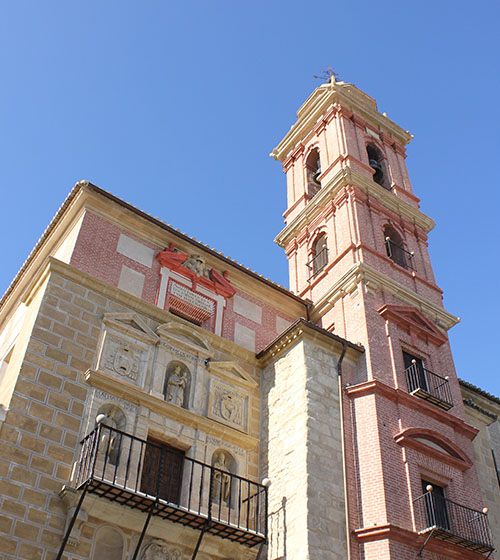
San Agustín Convent
In terms of its general structure, the convent of San Agustín was built between 1550 and 1556 by the master builder Diego de Vergara, although over the years it has undergone many different repairs and changes.
Calle Infante Don Fernando, 15, Antequera, Málaga
San Agustín Convent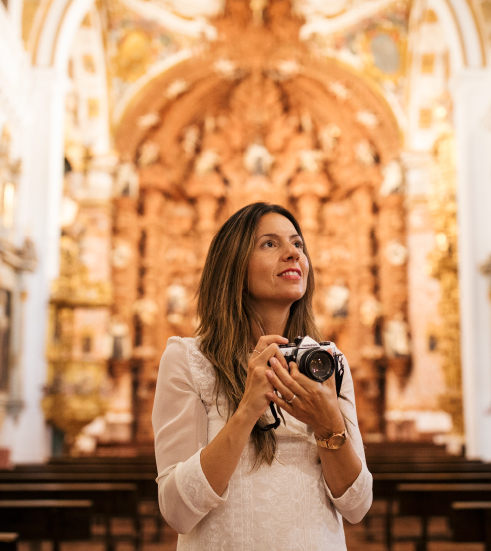
Church of Carmen
Almost hanging on an escarpment, as if watching from its height the river of the Villa, stands the magnificent exconventual temple of the Carmelitas Calzados, which today serves as the headquarters of the old parish of Santa María la Mayor. The works of this temple and the disappeared convent seem to have begun in the final years of the sixteenth century.
Plaza del Carmen, Antequera, Málaga
Church of Carmen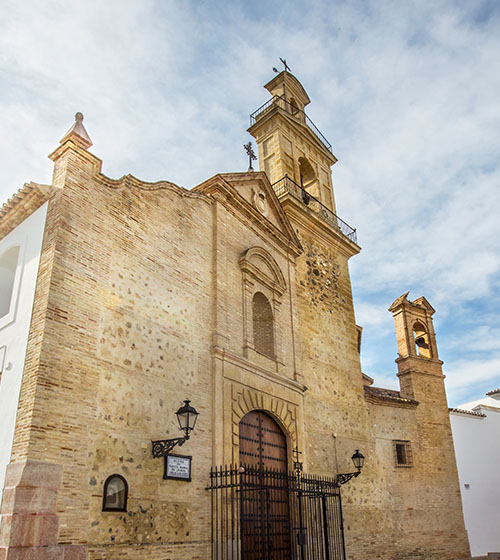
Church of Santa María de Jesús
This church, whose works began in 1527 and lasted until 1615, belonged in its foundation to a convent of the Third Franciscans and, since then until the present day, has undergone numerous reforms.
Plaza Portichuelo, 12, Antequera, Malaga
Church of Santa María de Jesús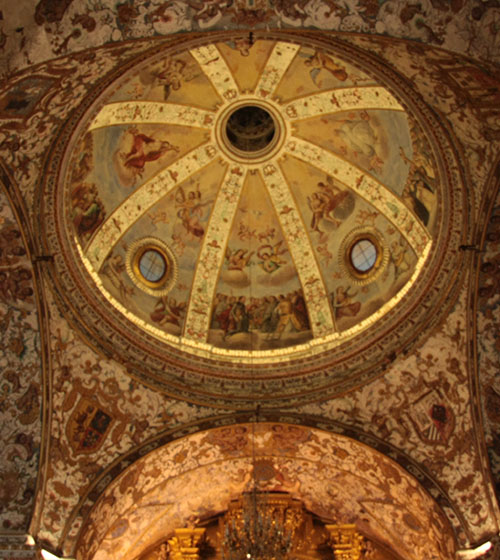
Church of Nuestra Señora de los Remedios
The first foundation in Antequera of the Third Franciscans was in 1519, in a place known as Las Suertes. There began to be highly venerated the small image of the Virgen de los Remedios who was named Patroness of the city in 1546. As a result of the remoteness of the location of the monastery and the increase in the cult of sculpture, the friars were encouraged to move to Antequera in 1607.
Calle Infante Don Fernando, 72, Antequera, Málaga
Church of Nuestra Señora de los Remedios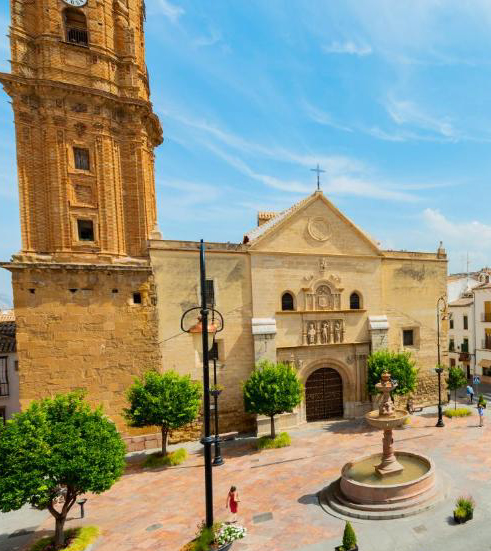
Collegiate Church of San Sebastián
The Collegiate Church of San Sebastián is the result of numerous additions and reforms over time. Its construction began in 1548, directing the works the architect Diego de Vergara. The year 1692 was important for this temple since it is the moment in which the Insigne Colegial is moved from Santa María to this church of San Sebastíán, with which it will undergo a great transformation and embellishment.
Plaza San Sebastian, 6, Antequera, Malaga.
Collegiate Church of San Sebastián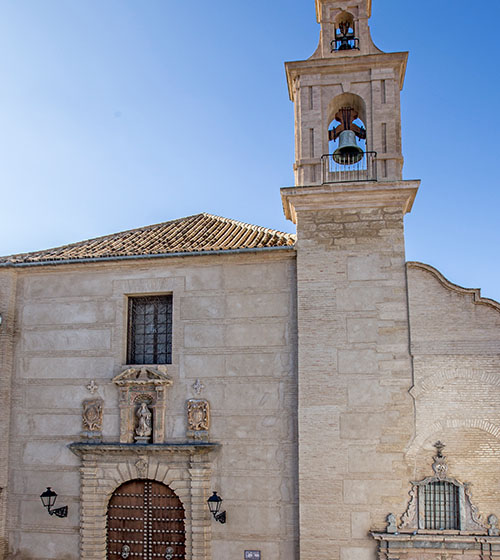
Santo Domingo Church
The installation of the Dominicans in Antequera dates from 1586, although provisionally they settled in the old house of the Brotherhood of Children Expositos of Our Lady of the Conception. Already in the first quarter of the seventeenth century the works of the current church begin. From that time we preserve the main portal, the Mudejar armor of the central nave and the coffered ceiling of the undergrowth.
Cuesta de la Paz, 16, Antequera, Málaga
Santo Domingo Church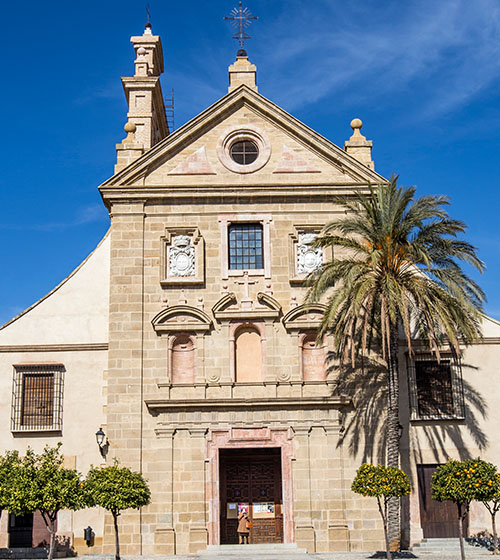
Parish of La Santisima Trinidad Antequera
The order of the Discalced Trinitarians founded this convent in Antequera on August 2, 1637. The current temple was built between 1672 and 1683, owing the traces to the architect friar of the same order, Fray Pedro del Espíritu Santo. The church model that is followed is the one that derives from the Incarnation of Madrid, the work of Juan Gómez de Mora. The façade is a rectangle framed by two smooth pilasters and crowned by a triangular pediment, articulating the central panel in three horizontal zones and three streets.
Calle Cruz Blanca, 18, Antequera, Málaga
Parish of La Santisima Trinidad Antequera